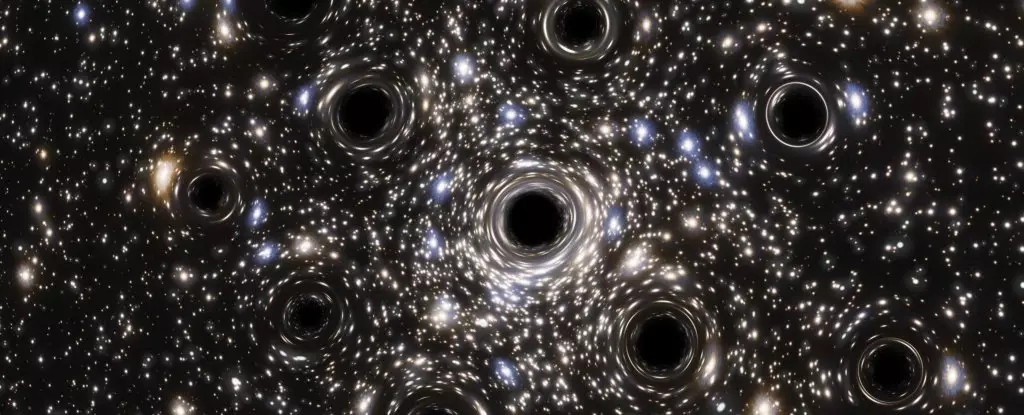Located approximately 80,000 light-years from Earth, Palomar 5 stands out as a fascinating subject for astronomers and astrophysicists alike. This globular cluster, often likened to a potpourri of stars, has captured the attention of researchers not only for its beauty but also for the secrets it harbors within. Spanning across an astonishing 30,000 light-years and comprising between 100,000 to 1 million ancient stars, Palomar 5 serves as a critical link to understanding stellar evolution and the formation of the universe.
Globular clusters like Palomar 5 are often viewed as ‘fossils’ from the early cosmos, rich in history and filled with stellar phenomena. However, the emergence of tidal streams—long, winding paths of stars that suggest dynamic interactions within galaxies—has opened new avenues for exploration within cosmic structures. Researchers are now investigating how these streams might arise from the rupture of star clusters, a hypothesis that finds its focal point in the unique configuration of Palomar 5.
In recent years, the discovery of tidal streams has revolutionized our understanding of star formation and cluster dynamics. Long believed to be difficult to identify, these stellar trails have become more visible thanks to advancements in observational technology provided by missions like the Gaia space observatory. Gaia’s precise astrometric measurements have dramatically enhanced our understanding of the Milky Way, revealing hidden structures that were previously obscured by the galaxy’s vastness.
Astrophysicist Mark Gieles, associated with the University of Barcelona, sheds light on the peculiar behavior of these streams, noting that the formation mechanisms remain poorly understood. The challenge lies in the absence of accompanying star clusters for many of the recently unearthed streams. Thus, studying Palomar 5—a tidal stream linked to a recognizable stellar cluster—serves as an essential foundation for unraveling the mysteries behind the origins of these mesmerizing celestial formations.
To investigate Palomar 5’s enigmatic characteristics, Gieles and his research team utilized N-body simulations to meticulously model the orbits and interactions of stars within the cluster. These simulations provided insights into how stellar dynamics have shaped the structure we observe today. One of the pivotal aspects explored was the role of black holes, particularly the predictions regarding their potential existence within globular clusters.
Recent studies suggest that black holes could be more prevalent in these dense stellar regions than once thought. By including a significant population of stellar-mass black holes in their simulations, Gieles and his colleagues demonstrated that these enigmatic objects might be instrumental in determining the current spatial distribution of stars in Palomar 5. Astonishingly, their findings indicated a population of black holes roughly three times higher than previously anticipated. This observation hints at an intricate interplay of cosmic forces that governs stellar dynamics in the cluster.
The Fate of Palomar 5
The implications of Gieles’s research extend far beyond Palomar 5 itself. According to their simulations, the cluster is on track to dissolve in roughly a billion years, ultimately leaving behind a trail predominantly composed of black holes. This scenario leads to musings about the future of similar globular clusters throughout the universe. As Palomar 5 transforms into a stellar stream, it challenges astronomers to rethink the lifecycle of star clusters and the role black holes play in their demise.
Additionally, the possibility that a significant fraction of binary black hole mergers might occur within these stellar environments opens intriguing considerations for black hole research. The formation paths of these elusive middleweight black holes—caught between the lightweight stellar-mass black holes and their massive counterparts—remain a prominent focus of scientific inquiry.
The ongoing study of Palomar 5 offers a glimpse into the intricate tapestry of galactic evolution and stellar dynamics. As our understanding of tidal streams and globular clusters deepens, we find ourselves on the brink of new discoveries that could reshape our comprehension of the cosmos. The potential for Palomar 5 to serve as a Rosetta Stone in elucidating the complexities inherent in cosmic structures cannot be overstated. It stands not only as a monument to the past but also as a guiding light for future inquiries into the enigmatic realm of black holes and their serene yet chaotic interactions within the universe.

